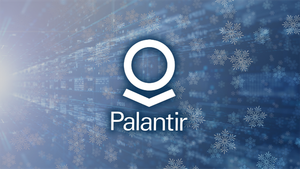The Controversial Trajectory of DEI Initiatives: What’s Next
Recently, numerous American enterprises have been actively axing or discontinuing their DEI (Diversity, Equity, and Inclusion) initiatives, including prominent names like Meta and Amazon. What was once celebrated as a commitment to diversity and inclusion by businesses and organizations is now mired in controversy. This wave signals a belief that equality should be universal, not limited to specific groups.
The Development of DEI
The history of DEI dates back to the mid-1960s, an era characterized by social movements and legal changes reshaping the corporate landscape. The implementation of equal employment laws and affirmative action marked the beginning of workplace diversity training. Initially, these training programs primarily addressed issues of racial discrimination, often providing guidelines on what should and should not be done in the workplace.
The 1980s and 1990s witnessed a significant evolution in DEI initiatives. During this period, DEI efforts began to acknowledge and address the diverse needs of various identity groups, including racial, religious, and LGBTQ+ communities. The business value of diversity was increasingly recognized, with organizations viewing diversity not only as a moral imperative but also as a key driver of business success.
In the 2000s, social media enabled a broader sharing of experiences with discrimination and bias, heightening awareness of the necessity of DEI in the workplace and positioning DEI as a business imperative. In the 2010s, with the rise of social movements such as #MeToo, #BlackLivesMatter, and #StopAAPIHate, there was a renewed focus on addressing societal injustices and bringing these discussions into the professional realm.
Public Opinion Sours on DEI
As DEI initiatives gain popularity and businesses and organizations view them as lucrative endeavors, these efforts slowly begin to deteriorate. The latest survey from the Pew Research Center revealed a growing percentage of workers who believe that their company or organization pays too much attention to increasing DEI.
In February 2024, American parents expressed dissatisfaction with K-12 education, increasingly questioning the curriculum content and advocating for the right to opt their children out of learning about LGBTQ issues. According to Pew Research Center, about half of public K-12 teachers believed students should not delve into gender identity topics at school. Fast forward to January 2025, Ohio Governor Mike DeWine signed legislation allowing parents to opt their children out of certain classes and restricting or even banning discussions on LGBTQ topics in classrooms.
On November 5, 2024, Donald Trump was elected as the 47th President of the United States and introduced his own cryptocurrency before his inauguration on January 20, with Project 2025 in the limelight. According to Reuters, this project, a detailed policy proposal crafted by hundreds of prominent conservatives, aimed for Trump to adopt these suggestions during his term, outlined in a roughly 900-page book. In 2023, lawmakers supporting anti-LGBTQI+ legislation introduced hundreds of policy bills, a trend reflected in Project 2025, raising concerns about increased risks of harm to LGBTQI+ students in schools. In The Trevor Project’s 2024 U.S. National Survey, 90% of LGBTQ+ young people stated that their well-being had been negatively affected by recent politics.
On January 7, 2025, a major wildfire broke out in Los Angeles, claiming at least 25 lives and forcing the evacuation of over 100,000 people. The Chief of Los Angeles Fire Department, Kristin Crowley, openly identified as a lesbian, faced public scrutiny for allegedly benefiting from DEI initiatives and prioritizing them over core duties during her tenure. The chief, however, accused the L.A. mayor of budget cuts hindering their ability to swiftly address the wildfire crisis.
DEI has been around for many years, with its essence originally meant to advocate for equality and inclusivity. However, an excessive focus on diversity can sometimes lead to the emergence of new social issues. What was intended to eliminate biases can inadvertently give rise to new prejudices. Presently, the corporate and organizational landscape is undergoing a new wave of revolution. In the future, DEI may continue to exist, but there is a call for a return to its core principles, ensuring that diversity, equity, and inclusion are qualities accessible to everyone.
Media Contact
Company Name: Medusa intl media co,ltd
Contact Person: Callie Byrnes
Email: Send Email
Country: Thailand
Website: https://www.madusaintl.com
More News
View More




Recent Quotes
View More
Quotes delayed at least 20 minutes.
By accessing this page, you agree to the Privacy Policy and Terms Of Service.